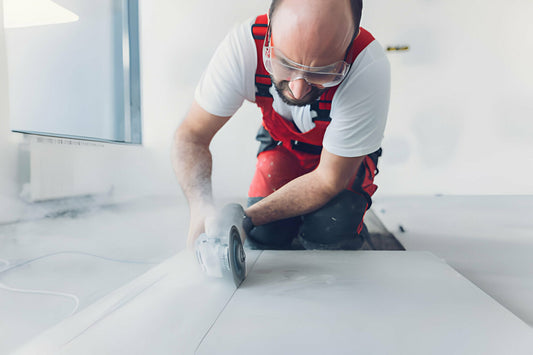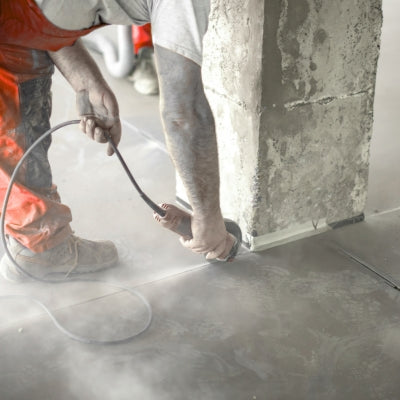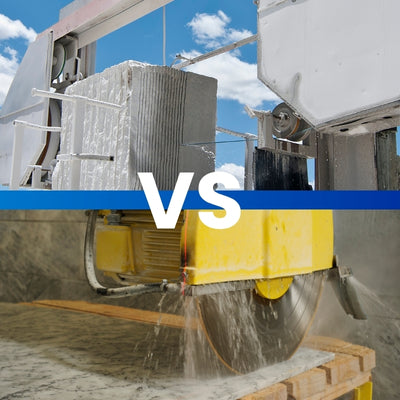
Share
Dry drilling or wet drilling: 11 things to know
Dry drilling or wet drilling is an important choice to make. Drilling has a very wide range of civil and industrial applications. For this reason, diamond core bits are the best solution for this type of work. Users drill a material either to extract the core for analysis and testing, or to make a simple hole.
However, these applications require two different working methods: dry or wet drilling? If you want to understand which is the best working method for you, discover all the features. This article analyzes both dry and wet drilling. Here are the 11 variables to keep in mind when making a decision.
Wet drilling: areas of application #1
Wet coring has a wide range of applications. This type of drilling involves the use of water as a lubricant to increase the performance of your diamond drill bit. Wet diamond core bits are designed to allow the passage of water. In fact, all diamond tubes have a central through hole. In fact, the centrifugal force will allow the water to propagate towards the outside of the cut. The most used applications for wet coring are the following:
- coring of stoneware pipes
- drilling concrete, reinforced concrete, brick, granite or natural stone walls
- core drilling work with depths greater than 30/40 cm
The use of water in wet coring also allows for a total reduction of dust. This factor is fundamental as water completely absorbs the cut material. Water also cleans the cut from residues that could create problems of overheating of the tool. In particular on hard materials such as reinforced concrete.
Drilling with a wet core bit: Tool life and speed #2
Water also helps the diamond core bit used for wet drilling last a long time. Dry drilling has many problems related to the tool overheating. With wet diamond core bits this happens very rarely. The liquid allows the diamond segments to wear constantly and optimally. For this reason, using wet diamond core bits will also allow you to be faster when drilling.
We can therefore say that wet drilling beats dry drilling in cutting speed and tool life.
FORCA – diamond core bits for wet core drilling here you will find the link to our diamond products for wet cutting
Wet coring requires cold, clean water #3
We know that heat is the result of the friction of two materials. In this case, the heat is given by the abrasion of the diamond with the material to be drilled. The use of a lubricant is essential to control the heat resulting from the process. You will understand that the temperature of the water is therefore fundamental. Cold water will allow the absorption of the heat generated more easily than the same element but at room temperature. If you have decided to drill wet and not dry, you might as well use cold water.
Dry drilling: application areas #4
Most of the time dry coring is the best solution in particular environments. For example when water cannot be used dry coring is the right solution. You can use the dry core drill with a manual core drill with M16 attachment or with professional core drills with 1″1/4 attachment. In some borderline cases it is possible to use dry core bits with manual drills.
FORLD – diamond core bits for dry coring here you will find the link for our dry diamond core bits with M16 attachment
In this case, make sure you don't make two trivial mistakes:
- Check if the RPM of the drill corresponds to those recommended by the diamond core bit manufacturers
- removes the hammer function of your drill (otherwise you will break the diamond part)
The recommended materials for dry drilling are soft materials:
- hollow bricks
- blocks
- soft concrete
I strongly advise you not to use dry core drilling for depths greater than 40cm
Dry drilling generates a lot of dust #5
Dry drilling generates a lot of excavation dust. This factor is not only a problem due to the quality of the air and the environment where you have to work. In fact, the dust generated creates poor visibility for the operator, slowing down the execution. In fact, you will have to stop the work if you want to check its progress.
If you choose to drill with dry diamond crowns I strongly recommend using a dedicated vacuum cleaner to help prevent these problems.
Dry Diamond Drilling: Speed and Tool Life #6
As anticipated, the heat generated with dry coring is unavoidable. For this reason, the friction between diamond, cut material and generated dust wears the diamond segments faster. We can say that the life of a dry diamond core bit is significantly lower than that of a wet core bit.
However, there are some small tricks to improve the speed and life of your diamond drill bit:
- Do not apply excessive pressure to the tool when drilling
- Clean the hole with a vacuum cleaner to remove debris or fine dust
- Totally avoid sudden and lateral pressures
- Use machinery with peripheral speeds suitable for the hole you need to make
Dry or wet diamond crowns: can they be easy replacements?
In conclusion to this article we can tell you that they are two similar tools but unique in their fields of application. Firstly for the environment where the work must be done. Secondly for the speed and life of the tool itself. It is therefore using the right tool with the relative equipment.
Obviously we cannot exhaust all the peculiarities of these distinct methodologies in a short article. If you need further information do not hesitate to contact us at the email address: sales@lanordsrl.it or via the whatsapp chat of this website.
Below you will find our two flagship products:



